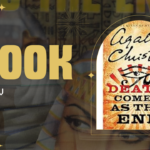On hearing the word “war,” we immediately picture two opposite sides clashing with each other, bloodshed, flying aircraft, and missiles penetrating the thick, deep air with the tint of blood to strike the opposite side. With all the modern artillery and intelligence systems, it has become less complicated to detect enemies when they are in closer range. Have you ever thought about how wars in ancient times would have taken place? How did the battleground appear? Some people reproduced the scenes of the battlefield and the emotions they carried onto a canvas with brushes and paint. These people came to be known as “war artists.”
War artists were the people who were either appointed by the government to record the events of the war or self-motivated to capture and analyse the other dimensions of warfare. These people were either onlookers or engaged in war themselves. They captured many aspects of war that written records and cameras couldn’t.
For example, the view of an artist engaged in war would be different from that of an onlooker. The one in the middle of the battle field would frame a much more precise masterpiece. To be a war artist, one must have extreme focus and skills in transferring the sensory emotions of a bloody battlefield onto a white canvas.
Pablo Picasso was a well-known artist whose work we all admire. He depicted the aftermath of the Nazi bombing of Gurenica, Spain. Though the interpretation was complicated with many confusing geometric shapes, people who had an eye for masterpieces were able to see a mother mourning the death of her child. Paul Nash was another gifted artist who depicted the brutal wars with a touch of mystical energy and symbolism. Though each had an eccentric style of portraying things, their message was clear.
Emotions like anger, guilt, shame, hatred, grief, and love are transferred into papers with gentle strokes of the brush that are lacking in ordinary texts. The mindset of an artist engaged in war might be dark, cold, and hard to read, but as soon as he depicts those emotions on a piece of paper, the colours, shapes, and strokes used might give away his inner thoughts and help people understand the emptiness of warfare.
War is not just about combat; it’s about the lives of innocent souls. People’s everyday lives are disrupted, and even combat soldiers suffer from mental trauma. The paint and brush strokes give life to the paintings and help people picture the impossible in their minds.








